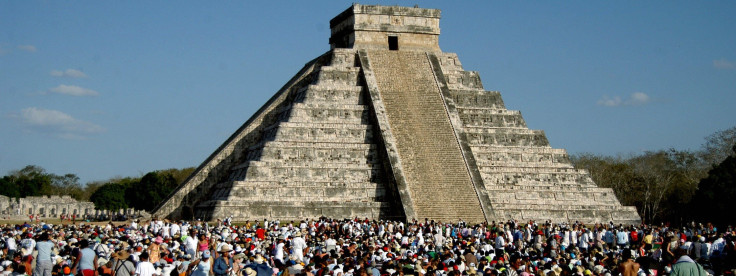Secret Passageway Discovered Underneath Mayan Snake God Temple

Archaeologists discovered a secret passageway beneath a 1,000-year-old Mayan pyramid, a finding that could lead to further discoveries about the ancient civilization, The Yucatan Times reported Sunday.
Researchers with the Great Mayan Aquifer Project discovered the Chichén Itzá passageway and explored it through electrical tomography hoping to discover cenotes, or water-filled caves, underneath the Kukulcan pyramid. Based on human remains experts previously discovered, the Mayans may have used cenotes for human sacrifices. Spanish explorers found the pyramid in the 1500s. Archaeologists believe further exploration of the underground passage will lead to more information about the Kukulcan, the Mayan snake god who bears the likeness of a feathered serpent and exited a cave after an earthquake.
Researchers with the Great Mayan Aquifer Project, led by underwater archaeologist Guillermo de Anda, used imaging techniques, such as ground penetrating lidar which sent electromagnetic signals through the pyramid, to advance their exploration. Although the team discovered the passageway, they have not explored it yet because it is blocked by the Ossuary, a smaller burial chamber. In 2015, the existence of cenote was found in the area. Researchers now hope to find the passageway leading to the entrance. Guillermo de Anda, a member of the Great Mayan Aquifer Project, spoke to El Universal about the blockage.
“Through the Ossuary, we can enter the cave beneath the structure and there we found a blocked passageway, probably closed off by the ancient Mayans themselves,” he said. “We will enter again and this time we will try to open it to see if the passageway leads us to the entrance of the cenote beneath the pyramid.”
“First we want to prove it exists because no one has seen it, we only have the images; then we’d have to explore it,” he added.
The exploration was a collaboration between the National Geographic Society, the Mexican National Institute of Anthropology and History and James Brady, a researcher with California State University and trailblazer in Mayan cave exploration.
© Copyright IBTimes 2024. All rights reserved.





















